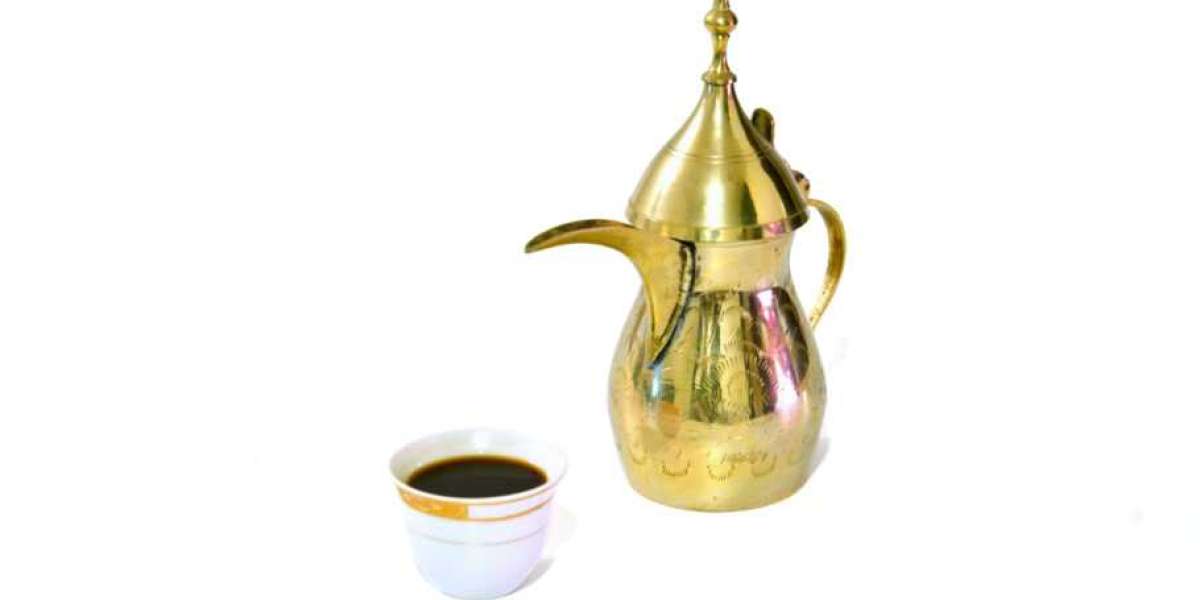Arabic coffee, also known as "qahwa," is not just a beverage; it’s a significant cultural ritual in the Arab world. It’s a symbol of hospitality, tradition, and social interaction. The Arabic coffee set is central to this experience, embodying the essence of Arab culture and tradition.
Components of an Arabic Coffee Set
An Arabic coffee set typically includes several key items, each playing an essential role in the preparation and serving of this iconic drink:
Dallah (Coffee Pot): The dallah is a traditional coffee pot, often ornately decorated, used to brew and serve Arabic coffee. Its unique shape, with a long spout and a large handle, is designed to pour coffee gracefully.
Finjan (Coffee Cups): These are small, handleless cups used to serve the coffee. They are typically made of porcelain or glass and come in various intricate designs. The size and shape of the finjan are significant, as they allow the coffee to cool to the right temperature quickly.
Mehmas (Coffee Roaster): A traditional roasting pan used to roast the coffee beans. The roasting process is crucial as it brings out the distinct flavors and aromas of the coffee.
Nafes (Grinder): A manual or electric grinder used to grind the roasted coffee beans to a fine consistency, essential for the preparation of Arabic coffee.
Zaraf (Coffee Thermos): Often used in modern settings, a zaraf is a thermos to keep the coffee hot for extended periods, ensuring guests can enjoy fresh coffee throughout their visit.
The Ritual of Arabic Coffee
The preparation and serving of Arabic coffee are steeped in ritual and etiquette. Here's a step-by-step look at this revered tradition:
Roasting the Beans: Coffee beans are roasted in the mehmas to a medium-dark roast, releasing their oils and unique flavors.
Grinding: The roasted beans are then ground to a fine powder using the nafes.
Brewing: The ground coffee is added to the dallah along with water and cardamom, a common spice used in Arabic coffee. The mixture is brought to a boil and simmered gently.
Serving: The host pours the coffee from the dallah into the finjan, serving the oldest or most honored guest first. Coffee is typically served in small quantities, often accompanied by dates or sweets.
Cultural Significance
The Arabic coffee set is more than just functional; it represents a deep-seated cultural heritage. The act of serving coffee is a gesture of hospitality and respect. It’s a way to welcome guests, initiate conversations, and strengthen social bonds. In many Arab households, the coffee set is a cherished heirloom, passed down through generations.
Modern Trends and Adaptations
While the traditional Arabic coffee set remains popular, modern adaptations have emerged. Today, you can find sets made from various materials, including stainless steel and modern ceramics. Electric coffee makers and grinders are also becoming common, blending tradition with convenience.
Conclusion
The Arabic coffee set is a testament to the rich cultural traditions of the Arab world. Each component, from the dallah to the finjan, plays a crucial role in the unique coffee experience. Whether in a traditional setting or a modern home, the Arabic coffee set continues to symbolize hospitality, heritage, and the timeless joy of sharing a cup of coffee.
By understanding and appreciating the Arabic coffee set, we not only enjoy a delightful beverage but also connect with a tradition that has brought people together for centuries.



